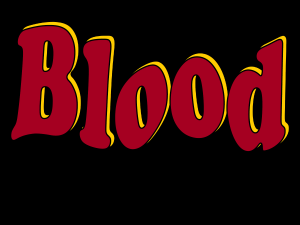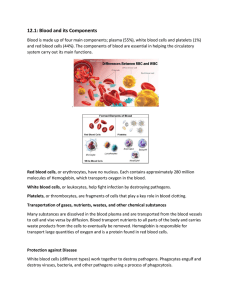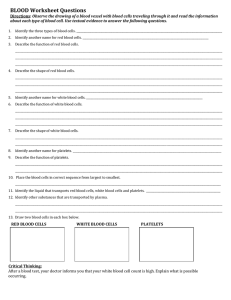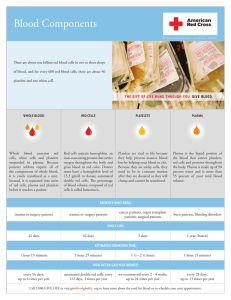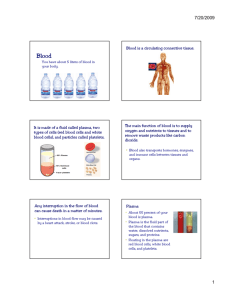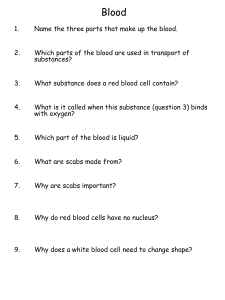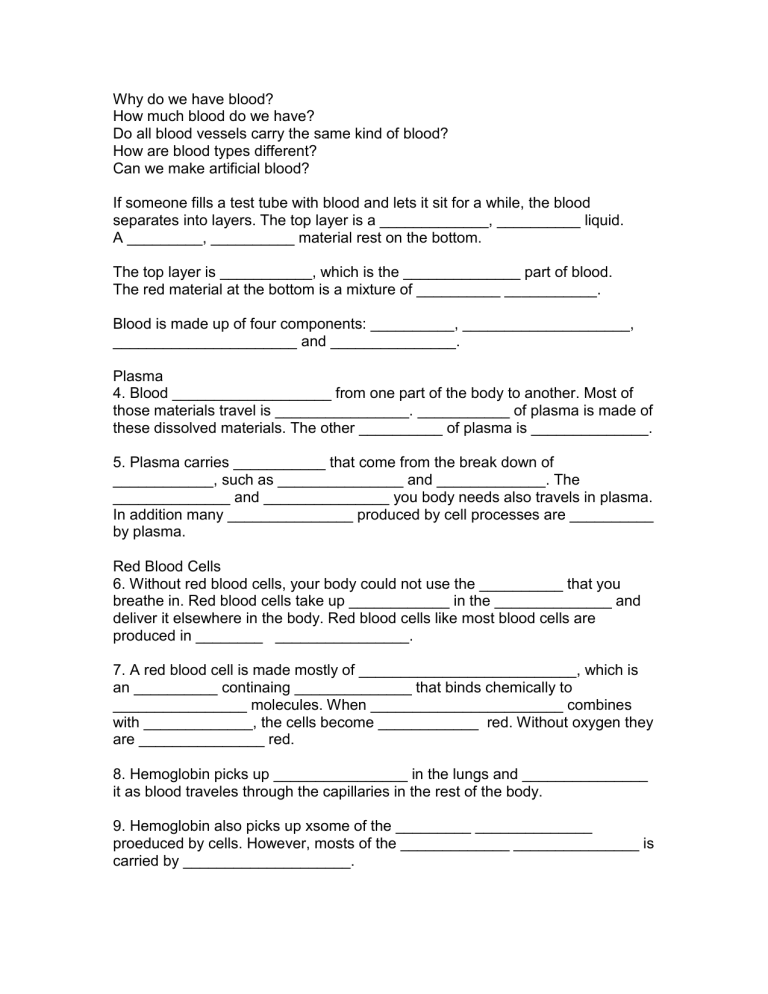
Why do we have blood? How much blood do we have? Do all blood vessels carry the same kind of blood? How are blood types different? Can we make artificial blood? If someone fills a test tube with blood and lets it sit for a while, the blood separates into layers. The top layer is a _____________, __________ liquid. A _________, __________ material rest on the bottom. The top layer is ___________, which is the ______________ part of blood. The red material at the bottom is a mixture of __________ ___________. Blood is made up of four components: __________, ____________________, ______________________ and _______________. Plasma 4. Blood ___________________ from one part of the body to another. Most of those materials travel is ________________. ___________ of plasma is made of these dissolved materials. The other __________ of plasma is ______________. 5. Plasma carries ___________ that come from the break down of ____________, such as _______________ and _____________. The ______________ and _______________ you body needs also travels in plasma. In addition many _______________ produced by cell processes are __________ by plasma. Red Blood Cells 6. Without red blood cells, your body could not use the __________ that you breathe in. Red blood cells take up ____________ in the ______________ and deliver it elsewhere in the body. Red blood cells like most blood cells are produced in ________ ________________. 7. A red blood cell is made mostly of __________________________, which is an __________ continaing ______________ that binds chemically to ________________ molecules. When _______________________ combines with _____________, the cells become ____________ red. Without oxygen they are _______________ red. 8. Hemoglobin picks up ________________ in the lungs and _______________ it as blood traveles through the capillaries in the rest of the body. 9. Hemoglobin also picks up xsome of the _________ ______________ proeduced by cells. However, mosts of the _____________ _______________ is carried by ____________________. White Blood Cells 10. Like red blood cells, white blood cells being their existence in ______________ ________________. White blood cells are the body’s _______________ _____________________. Platelets 11. Platelets are _________ _______________ that play an important part in forming blood _________________. 12. When a blood vessel is cut, _____________ collect and stick to the vessel at the site of the wound. The platelets release ___________. _________ gets its name from the fact that it weaves a net of tiny ___________ across the cut in the blood vessel. The ______ net traps blood cells. As more platelets and blood cells become trapped in the net, a blood _______ forms. A _______ is a dried blood clot on the skin surface. 1. 2. 3. 4. Plasma composes 55% of our blood, and is 92% water. It carries dissolved nutrients like glucose, protein and hormones to parts of the body and picks up waste to bring back to organs to be cleaned or "filtered" it out. In this activity, plasma is represented by the water. The nutrients/waste are represented by the sprinkles. Red Blood Cells comprise 44% of our blood. Red blood cells contain hemoglobin and carry oxygen around the body. They only live for about 3 months. These cells are continuously reproduced in the bone marrow. In this activity, red blood cells are represented by the red hots. White Blood Cells account for .5% of our blood and are larger than red blood cells. They are built to fight infections. In this activity, white blood cells are represented by the white marshmallows. Platelets account for .5% of our blood and help to clot our blood when we get a cut. You are making a 125 gram model of blood using water and candy. ___ g. of water ___ g of red blood cells ___ g of nutrients/waste ___ g of white blood cells and platelets 138 grams of plasma 138 grams of plasma .92 water .8 nutrients/waste 250 grams of blood .44 red blood cells 250 grams of blood .01 white blood cell + platelets _____ g of water _____ g of nutrients/waste _____ g of red blood cells _____ g of white blood cells and platelets

